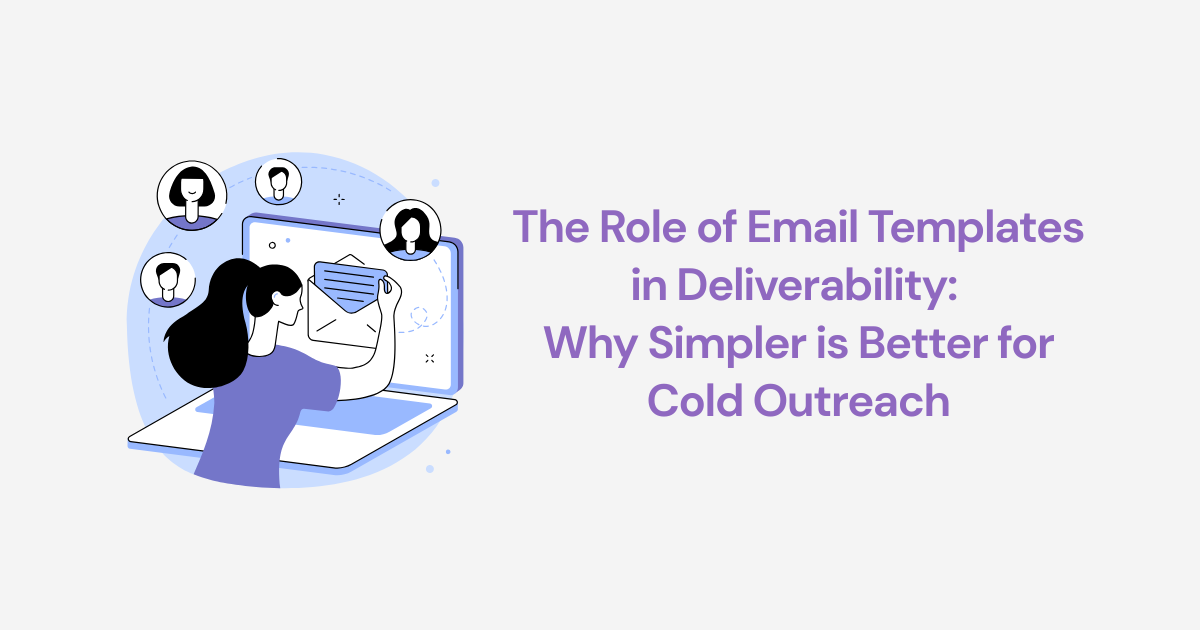
You can set up SPF, DKIM, and DMARC perfectly, warm up your domain for weeks, and still land in spam.
One overlooked reason? Your email template.
Most people think deliverability is all about infrastructure. In reality, your template is one of the strongest signals mailbox providers use to judge if you’re a real sender or a spammer.
An email template isn’t just a visual layout. It’s a mix of:
Mailbox providers analyze this structure to decide if your message fits patterns of trusted human communication or bulk promotional mail.
If your emails look like every other promo blast—HTML-heavy, image-packed, and identical, you’re training filters to treat you like a newsletter, not a person.
👉 Learn more: If you’re still unsure how mailbox providers detect patterns, check Mailivery’s post: Why Your Emails Are Going to Spam it breaks down the top content mistakes senders make.
Every extra <div> and <table> increases your “bulk mail” footprint. ISPs associate heavy HTML and multiple images with marketing campaigns. For cold outreach, it’s a red flag.
Sending the same identical layout hundreds of times triggers “pattern recognition.” Filters see repetition as automation, not genuine communication.
A single email with multiple links especially shortened ones (bit.ly, tinyurl) is a deliverability killer.
Use one call-to-action link and make sure it’s from your domain (e.g., go.yourcompany.com).
All-caps, colored fonts, and aggressive punctuation (“!!!” or “$$$”) instantly lower trust scores.
Spam filters aren’t just language models, they also evaluate tone and formatting patterns.
When it comes to cold outreach, text-only is the best format, period.
Here’s why:
In deliverability testing across thousands of Mailivery accounts, plain-text emails consistently outperform HTML templates in inbox placement, open rates, and reply rates.
If you want your cold emails to feel authentic and land where they should keep them text-based, conversational, and short.
👉 Related: How to Use Spintax in Cold Email to Improve Deliverability
1. Start with plain text first.
Use HTML only when absolutely necessary (branding, visual newsletters).
2. Keep text-to-image ratio above 80:20.
One small logo is fine. Multiple banners or product grids? Skip them.
3. Use your own domain for links.
Custom tracking subdomains preserve reputation.
4. Write natural copy.
Ask a question, make it personal, and avoid “salesy” phrases.
5. Rotate message variations.
Spintax or minor copy changes keep your outreach fresh. Mailivery’s custom templates feature makes this effortless.
6. Test before scaling.
Send small batches and monitor placement before pushing volume.
.png)
Mailivery’s warm-up system can automatically test your templates across Gmail, Outlook, and Yahoo to see which ones reach the inbox.
You can also:
This combination helps you train inbox providers that your messages are legitimate, personal, and worth delivering.
For a more complete understanding of tools and strategy, check out 👉 Best Email Warm-Up Tool in 2025
Your email template isn’t just a design choice, it’s a deliverability factor.
Over-designed messages scream “mass marketing.”
Plain-text emails whisper “personal conversation.”
If your goal is cold outreach that lands in the inbox, ditch the fancy HTML and stick with text-only.
That’s what real senders do and that’s what mailbox providers trust.
